We all know roses are delicate and beautiful, but what do you do when your prized blooms have red leaves? Are they sick? Is there something wrong with the plant? It can be alarming to see an unexpected color on our plants so let’s dive right in and find out why these leaves may have changed color and most importantly how to treat them. In this blog post, we will explain the causes of red leaves on roses as well as steps that could help restore their health. So if you’re ever worried about why your roses have developed a reddish tint, read on for guidance backed by workflow background information!
When a Rose Bush with Red Leaves is Normal
If you notice a few red leaves on your rose bush, it is quite likely that this is normal and nothing to be concerned about. Red leaves can appear for many reasons, such as age, stress from extreme temperatures or drought, or insect damage. If the red leaves are clustered together on one branch or toward the bottom of the bush, they may simply be older leaves that have not yet been shed by the plant. Generally speaking, if only a few leaves are affected and there are no other signs of distress (such as wilting foliage), then there is probably nothing to worry about.
However, it is important to watch closely for any changes in growth patterns and leaf coloration; if further signs of distress become evident (such as browning or wilting foliage), then further investigation is necessary. If the red leaves are accompanied by a yellow halo, this could be an indication of iron deficiency and should be treated immediately. In any case, it is important to pull up a few of the affected leaves for closer examination to determine whether there is a problem that requires attention.
In conclusion, if you see red leaves on your rose bush, don’t panic! It’s likely nothing to worry about but it’s important to observe closely for any changes in the plant. If problems become evident or persist, further investigation and possible treatment may be required. [1]
Rose Leaves Turning Red: Reasons
Rose Rosette Disease: Symptoms and Solutions
Red leaves on roses can be an indication of a plant ailment known as Rose Rosette Disease (RRD). This viral infection is caused by the mite-transmitted virus, which affects both wild and cultivated roses. RRD is particularly common in cooler climates, where temperatures drop during the winter months.
Symptoms of RRD include reddish-purple growths on new shoots, red foliage, stunted growths with multiple stems, witches’ broom-like symptoms, distorted and deformed buds and flowers that may not open or have discolored petals. In severe cases of RRD, plants may become defoliated and dieback can occur.
The best way to avoid potential problems with RRD is to plant disease-resistant roses in your garden and ensure proper care. Other solutions include:
- Prune infected plants—remove dead or diseased canes, cut out twiggy growths and thin the canopy of affected plants.
- Apply a fungicide at the first sign of infection.
- Dispose of infected material away from other roses (in plastic bags) rather than composting it.
- Monitor for mites and spray accordingly (every 7-10 days).
- Maintain good sanitation practices by regularly removing debris from around plants and disposing of it properly.
- Plant only certified disease-free roses. By following these simple steps, you can help keep your roses healthy and prevent the spread of RRD.

Frost Damage: Symptoms and Solutions
Frost damage can also cause red foliage on roses. Frost damage occurs when temperatures drop below freezing, causing the water in plant tissues to freeze, expand and rupture cells.
Symptoms of frost damage include wilting leaves, brown or black patches and discoloration of stems, buds and foliage.
The best way to avoid potential problems with frost damage is to grow hardy varieties of roses that can tolerate extreme temperatures. [2]
Other solutions include:
- Mulching around plants to help insulate them from the cold
- Covering roses with a frost cloth or blanket on especially cold nights
- Pruning off damaged stems and buds to encourage healthy growth
- Installing overhead irrigation systems that can help plant tissue retain heat
- Watering plants deeply before a freeze to help insulate them against cold temperatures If you have suffered a frost injury, some helpful steps include:
- Prune away any dead or damaged branches as soon as possible. This will allow new growth to emerge.
- Fertilize lightly with balanced fertilizer in early spring and again mid-summer.
- Spray affected plants with fungicide to prevent rot and mildew.
- Monitor soil moisture and water as needed to keep the soil consistently moist.
- Check for pests or diseases, as they are more likely to affect weakened plants.
Herbicide Damage: Symptoms and Solutions
When it comes to red leaves on roses, the most likely culprit is herbicide damage. Herbicides can cause a variety of symptoms on different types of plants, including red or purplish foliage. You may see browning and yellowing leaves, or even burnt spots on stems. This type of damage is typically caused by accidental overspray from herbicides that are meant for another area of your garden.
Fortunately, if you catch the problem early enough, there are some simple steps you can take to repair any damage caused by herbicide drift:
- Identify the source of the herbicide spray and stop spraying in that area;
- Cut off all affected leaves and stems as far down as possible;
- Prune back the plant to encourage new growth in affected areas;
- Water the plant with plain water (not fertilizer);
- If needed, apply a foliar spray of liquid seaweed or fish emulsion to help promote healing.
By implementing these steps, you should be able to repair any damage caused by herbicide drift and keep your roses looking beautiful! However, if the problem persists after taking these steps, it is best to consult with a professional who can assess the situation and provide additional guidance and advice. [3]
Red Leaves on Knockout Roses
Left untreated, these leaves can be unsightly and can even cause damage to the rose bush. However, there are several steps one can take to address the issue of red leaves on roses.
For instance, if aphids are present then spraying with an insecticidal soap will help control them and reduce leaf discoloration. If the issue is due to a fungal infection, then applying a fungicide may help. Watering regularly and fertilizing with an appropriate fertilizer can also help ensure that roses are getting all the nutrients they need.

Finally, it’s important to prune any affected leaves or branches in order to promote healthy growth and prevent further damage. Properly disposing of fallen leaves or infected branches as soon as possible will also help keep the rose bushes free of pests and disease.
By following these steps, gardeners can help ensure their roses stay healthy and beautiful!
Should I Prune Red Rose Leaves?
It’s important to remember that it is not necessary to prune red rose leaves. Pruning can be beneficial for certain varieties of roses, but it is not required for all types.
If the leaves are healthy and disease-free, then there is no need to prune them. However, if you notice any signs of damage or disease on the leaves, such as discoloration, spotting, wilting or yellowing, then pruning can help reduce the spread of infection and improve overall health.
If you choose to prune red rose leaves, use clean pruning tools and make sure that all cuts are made above an outward-facing bud so the new growth will grow in the desired direction. After pruning, spray the plants with a fungicide or insecticide for added protection against any pests or diseases lurking in your garden.
Ultimately, deciding whether or not to prune red rose leaves is up to you – as long as you keep an eye out for signs of infection and take proper precautions when trimming back branches and leaves, your roses should stay healthy and strong. [4]
Proper Treatment Tips
The best way to protect roses and keep them healthy is to practice good preventive maintenance. Here are some tips for dealing with red leaves on roses:
- Keep the area around your rose bushes weed-free by regularly removing weeds that may be competing for nutrients and water.
- Water your rose plants deeply, but less frequently, to encourage deeper root growth which will make them more tolerant of drought and disease.
- Prune away any diseased or dead branches during late winter or early spring before new growth begins to appear. This will help promote air circulation and reduce the chances of disease spreading from infected to healthy branches and blooms.
- Mulch around the base of your rose bushes or spread a layer of well-rotted compost to help retain moisture and provide additional nutrients.
- Avoid using chemical fertilizers, as they can be harsh on the roots and stems of roses.
- Monitor the foliage for signs of disease and treat with an appropriate fungicide if necessary—these can easily be found at most garden centers or online stores.
- If you notice red leaves on roses, clip them off immediately to reduce the possibility that disease will spread throughout the remainder of your bush.
With these tips, you should be able to keep your rose bushes healthy and free from red leaves!
What Happens If You Don’t Cut Roses?
If you don’t take action to cut off any red leaves on roses, then they may spread the disease to other plants. This will cause damage and hinder growth of the roses and other flowers in your garden. Additionally, many fungal diseases can survive over winter in dead foliage, so it’s important to remove all affected leaves before the cold season arrives. Otherwise, you will risk re-infecting your roses with the same fungi next spring. Taking the time to properly prune and dispose of infected parts is essential for protecting both your roses and other plants from infection. Failure to do so could lead to further damage or even death of your beloved plants.
By being aware of what signs to look for and taking swift action, you can ensure that your roses stay in their best health throughout the growing season. You don’t want them to suffer due to a preventable fungal infection, so be sure to pay attention and act ASAP if you spot any red leaves on your roses! [5]
Do Roses Grow Back When Cut?
Yes, roses do grow back when cut. In fact, rose bushes can be trimmed and shaped in various ways to ensure a bush that flowers abundantly. Cutting the roses encourages the growth of side shoots, which will produce even more flowers. The best time to prune is just before new growth begins in spring.
Additionally, it’s important to remove any old or dead wood as well as any broken or diseased branches. This will help ensure that your rose bush is healthy and vigorous throughout the season.
Finally, be sure to water your rose regularly and prune off any dead or diseased leaves and petals that may appear.
Can I Spray Water On Rose Leaves?
Watering your roses is an important part of keeping them healthy and strong. However, if you notice that the leaves on your roses are starting to turn red, it’s not a good sign. It may be caused by environmental stressors or a pest infestation. Before spraying water onto the leaves, it’s important to determine what is causing the discoloration. If it’s due to excess heat or drought stress, then spraying water can help alleviate these issues; however, if there is an insect infestation present then it would be best to treat pests first before attempting any other measures such as watering.
Overall, it is important to take proactive measures in order to determine what is causing the discoloration on your rose leaves before attempting any treatments such as spraying water. Once you have identified the issue, then you can choose an appropriate solution that will help ensure that your roses stay healthy and beautiful. [6]
How Long Do Roses Live?
Roses can live for decades with the proper care and maintenance. They prefer warm climates and plenty of sun, water, and nutrients. As a general rule, roses should be watered every few days to keep them hydrated, while keeping an eye out for pests or disease. In addition, roses need to be pruned regularly in order to promote healthy growth and shape. Finally, applying fertilizer once per month will help maintain their health and vigor over a longer time period. With these steps taken on a regular basis, roses can easily last several years or more!
In terms of dealing with red leaves on roses specifically, it is important to identify the cause before attempting any intervention. Red foliage could be caused by several factors, including environmental stressors like too much sun or not enough water, pests or disease, or even a nutrient deficiency. Once the cause has been identified, appropriate action can be taken to remedy the situation and restore the rose’s health. In some cases, this may involve providing additional water or nutrients, while in others it could involve treating pests or diseases. No matter what the underlying cause may be, addressing it promptly is essential to restoring the beauty of your roses!
Do Roses Lose Their Leaves In Winter?
Yes, roses do lose their leaves in winter. This is a normal process of dormancy for roses, and it helps them to survive the colder weather. When temperatures drop, roses will naturally shed their leaves as part of the process of self-preservation. During this period of dormancy, the plants will not grow or produce any new growth until warmer temperatures return. This protects the plant from dying due to extreme cold temperatures. If you notice red leaves on your rose bushes during winter months, it is likely just a sign that they are preparing for winter dormancy.
If you want to help your roses prepare for the colder months ahead, there are some things you can do. Trim back any dead or diseased branches and prune the plant to give it a good shape. This will help the bush to focus its energy on producing strong, healthy growth when springtime comes around. It is also important to keep the soil surrounding your roses well-drained and mulched in order to protect the roots from cold temperatures.
Lastly, cover your rose bushes with burlap or another material that provides insulation during colder months.
FAQ
Why are my rose leaves turning red?
The red leaves may be caused by a number of different factors. It could be due to improper cultural practices such as incorrect watering, fertilizing or pruning techniques, not enough sunlight exposure, an insect infestation or disease pressure. It is important to identify the cause in order to develop an effective treatment plan.
What should I do if my rose leaves are turning red?
Start by inspecting the plant for any signs of insects or diseases and prune away any affected areas. Make sure that you are following proper cultural practices such as regularly providing adequate water, sun exposure and fertilizer according to your particular climate and soil type. If this does not resolve the issue, consider consulting a professional with experience in treating roses who can diagnose and recommend a course of action.
Are there any preventative measures I can take to keep my roses healthy?
Yes, there are plenty of things you can do to help prevent red leaves from appearing on your rose plants. Make sure your roses have adequate sunlight exposure and water them deeply during dry periods. Prune away dead or diseased branches and remove any fallen leaves from the area immediately. Fertilize regularly with a balanced fertilizer made specifically for roses according to package directions. Lastly, check often for insects or disease pressure and take appropriate action if found.
How do you treat rust on rose leaves?
Rust on rose leaves can be treated with a fungicide. Fungicides are chemicals that inhibit the growth of various fungi. To treat rust on roses, use a product specifically labeled for treating rust diseases on roses. It is important to follow all directions carefully and apply the fungicide according to the label instructions. Make sure to cover all parts of the affected plant, including both sides of the leaves, and repeat applications as needed until the disease is under control. Prune off any infected canes or branches since they will not recover from this fungal disease. Lastly, make sure to remove any fallen, infected leaves or blossoms and dispose of them away from other plants as these could spread infection further.
Should I cut off damaged rose leaves?
In most cases, it is best not to cut off damaged rose leaves. Pruning the leaves may cause further damage and reduce blooming. However, if the leaf is entirely covered in rust or has spots that are severely affecting its appearance, then pruning may be necessary. Make sure to use sharp garden shears when removing affected leaves and dispose of them away from other plants to help prevent spreading infection further.
Useful Video: Is this Rose Rosette Disease (RRD) ? // Red Growth on Roses
Conclusion
When roses have red leaves, it is important to take action quickly in order to prevent further damage to your plants. Start by identifying the cause of the discoloration; if it is due to a nutrient deficiency, introduce fertilizer or other soil amendments as soon as possible. If it’s caused by disease or pests, apply appropriate treatments immediately. Monitor the roses closely for any changes and continue treating them until they are healthy again. With careful attention and proper care, you can help ensure that your rose bushes will remain healthy for years to come.
References:
- https://www.gardeningknowhow.com/ornamental/flowers/roses/red-leaves-on-roses.htm
- https://www.ehow.com/facts_7424719_rose-bush-leaves-turn-red.html
- https://gardenguider.com/red-leaves-on-roses/
- https://www.gardenguides.com/88042-mean-rose-leaves-turn-red.html
- https://plantcarer.com/red-leaves-on-roses/
- https://homeguides.sfgate.com/rose-bush-tips-turning-red-90410.html





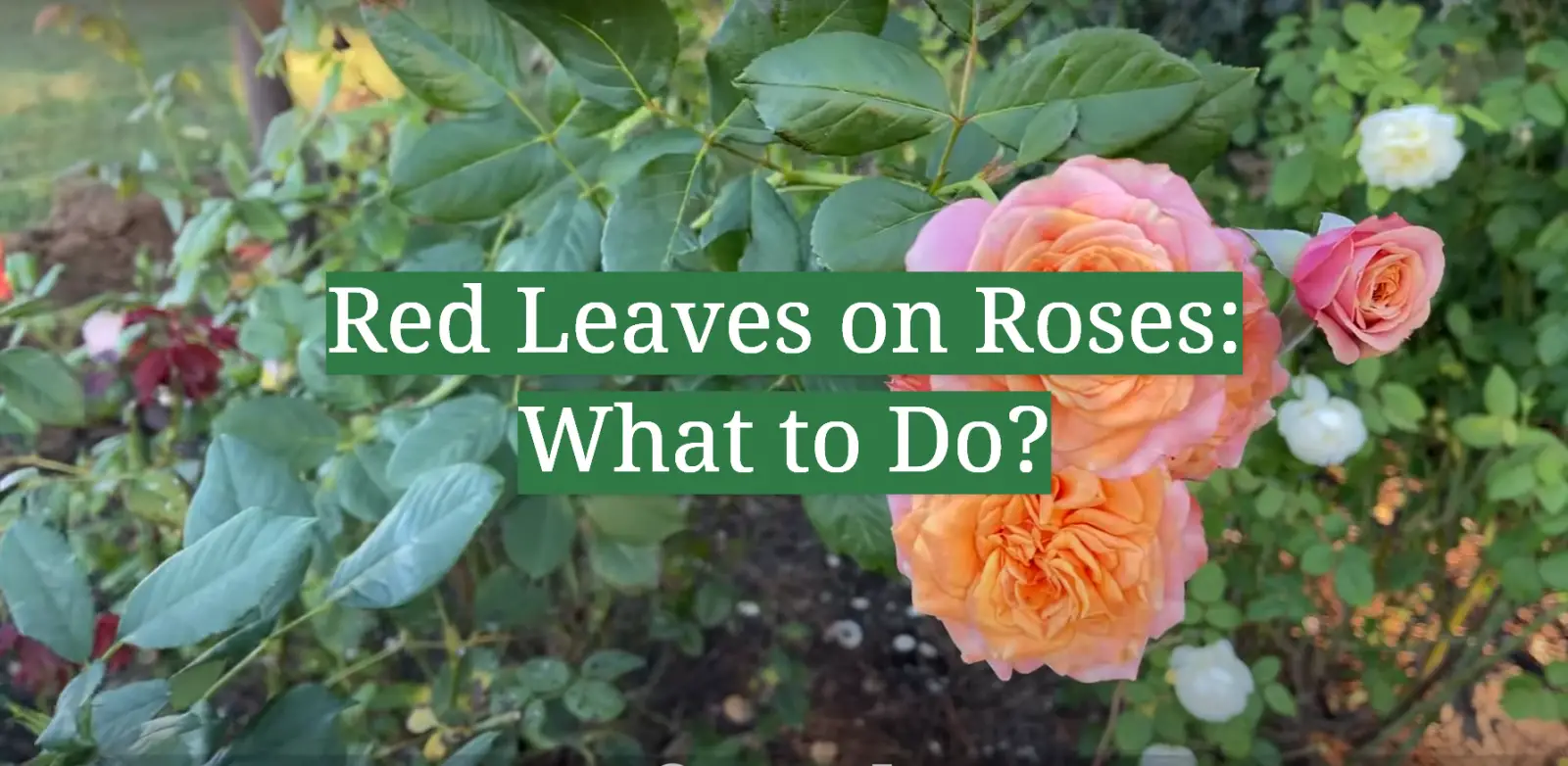
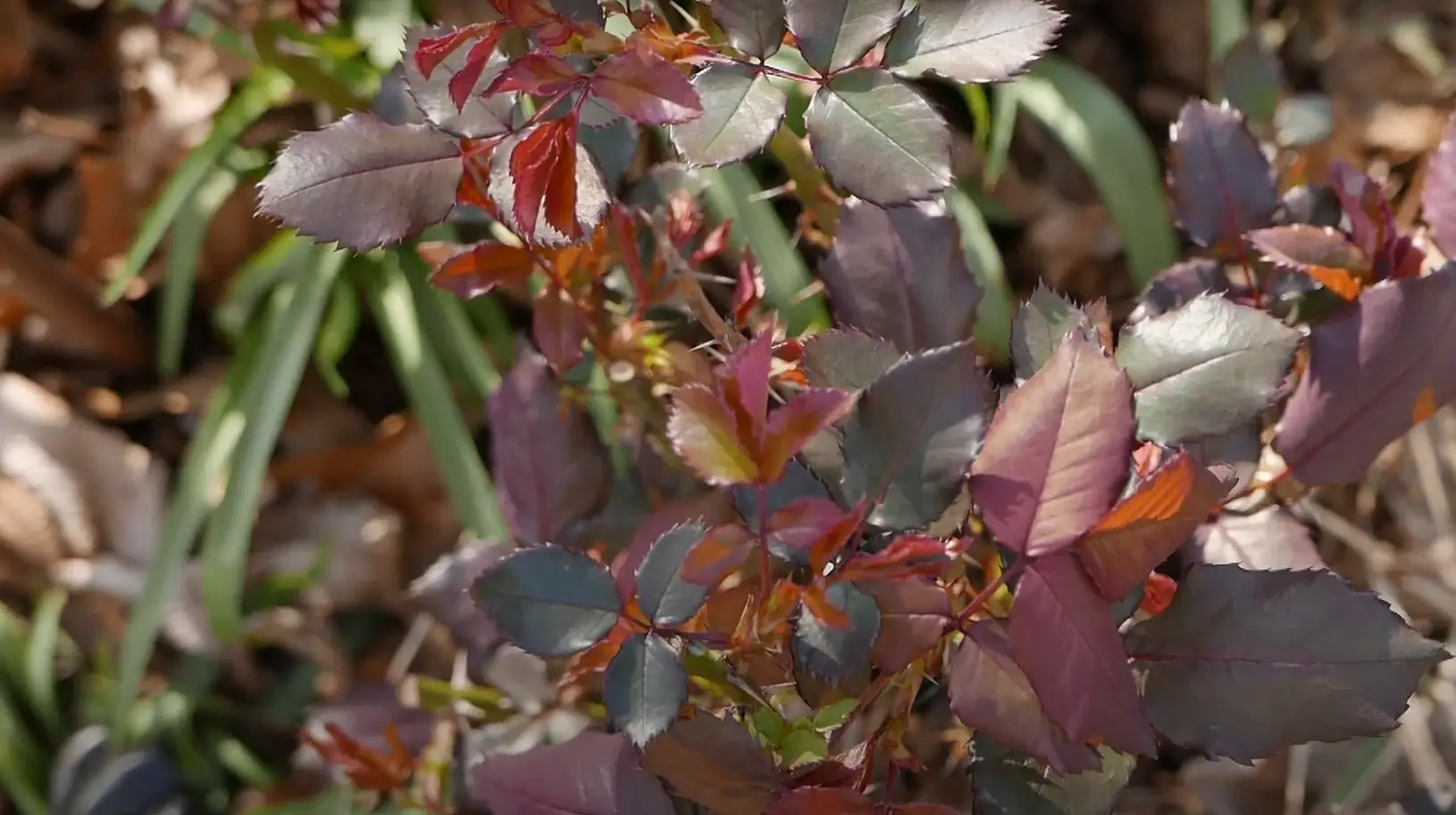
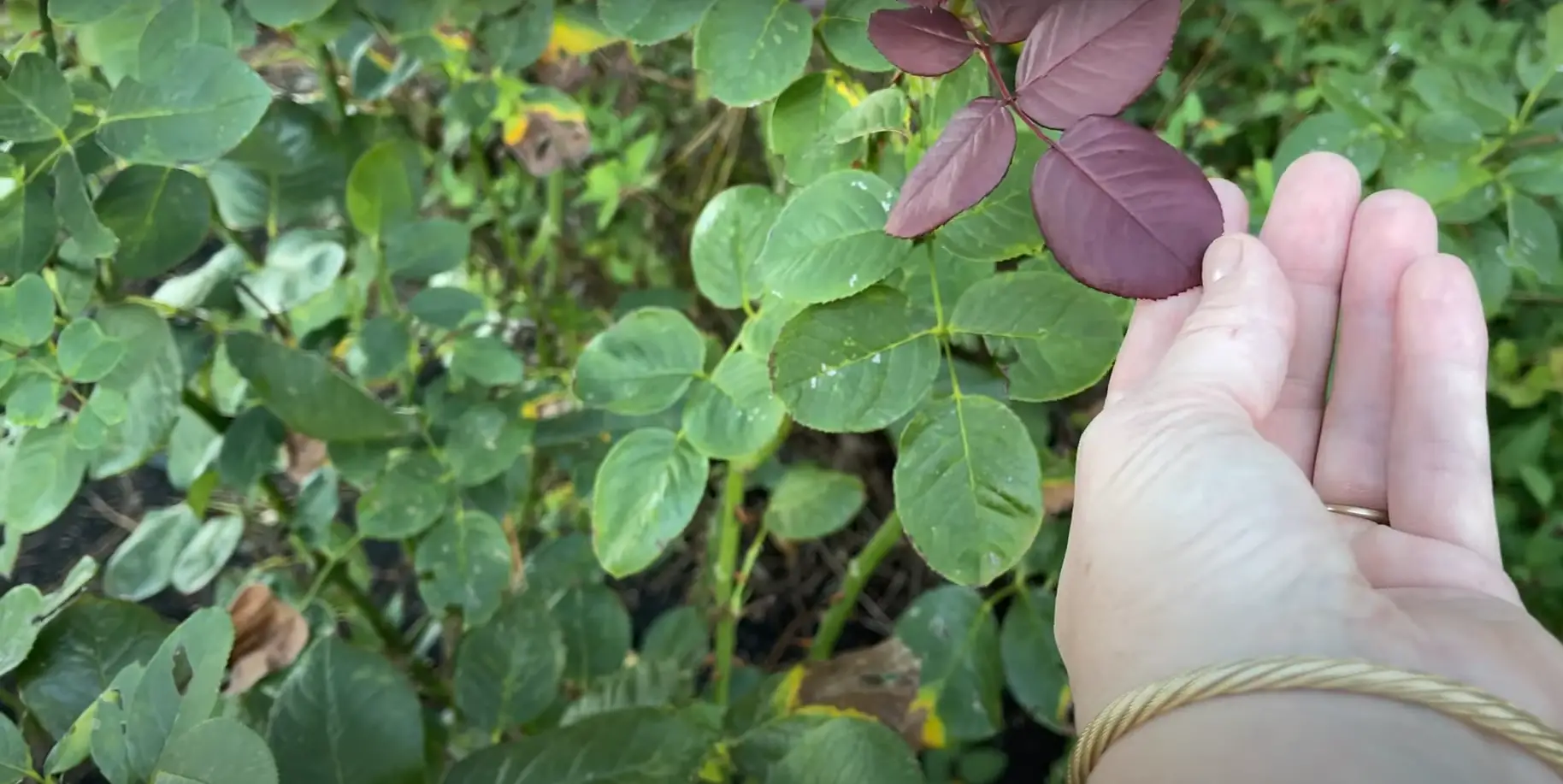
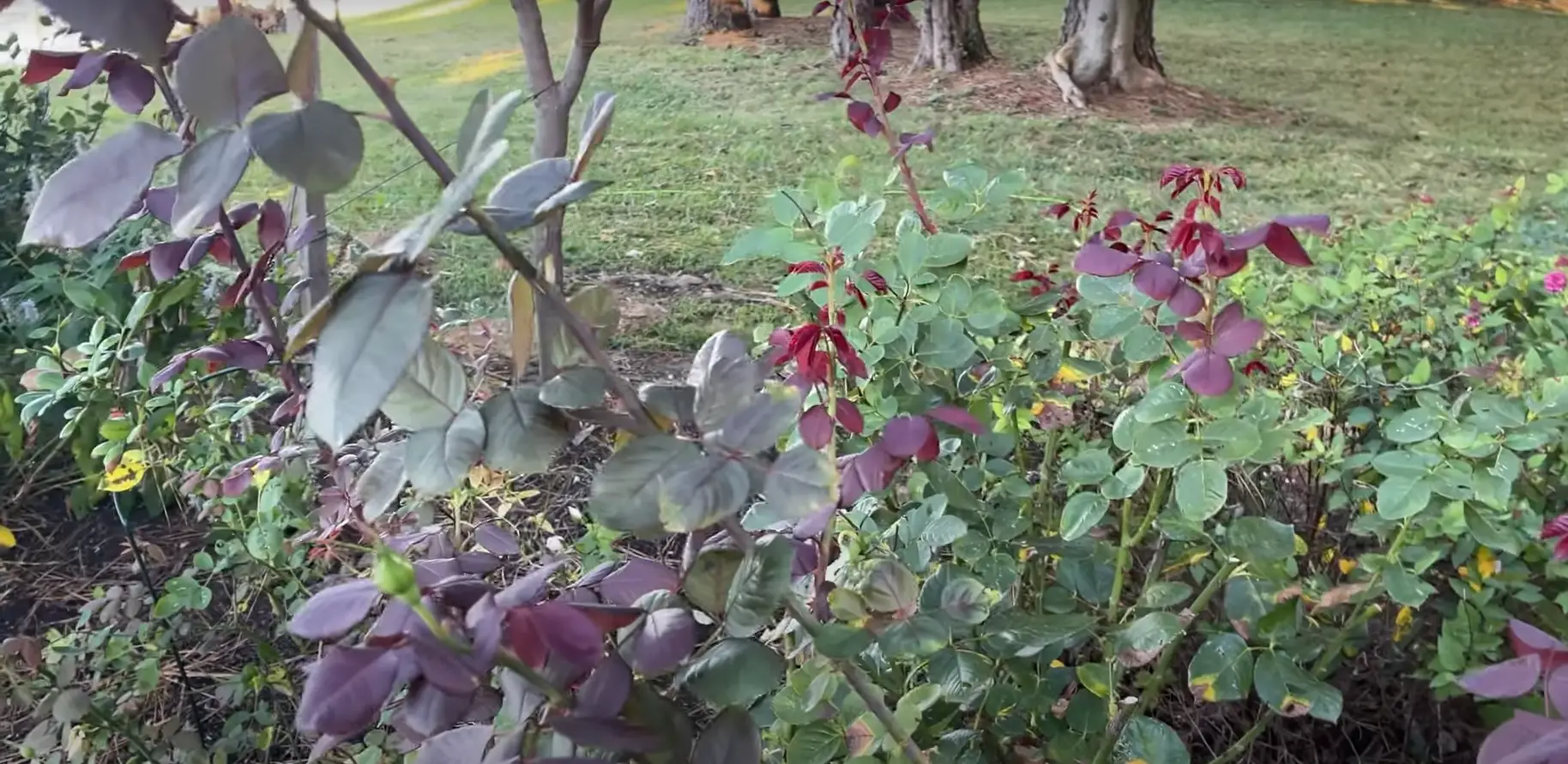

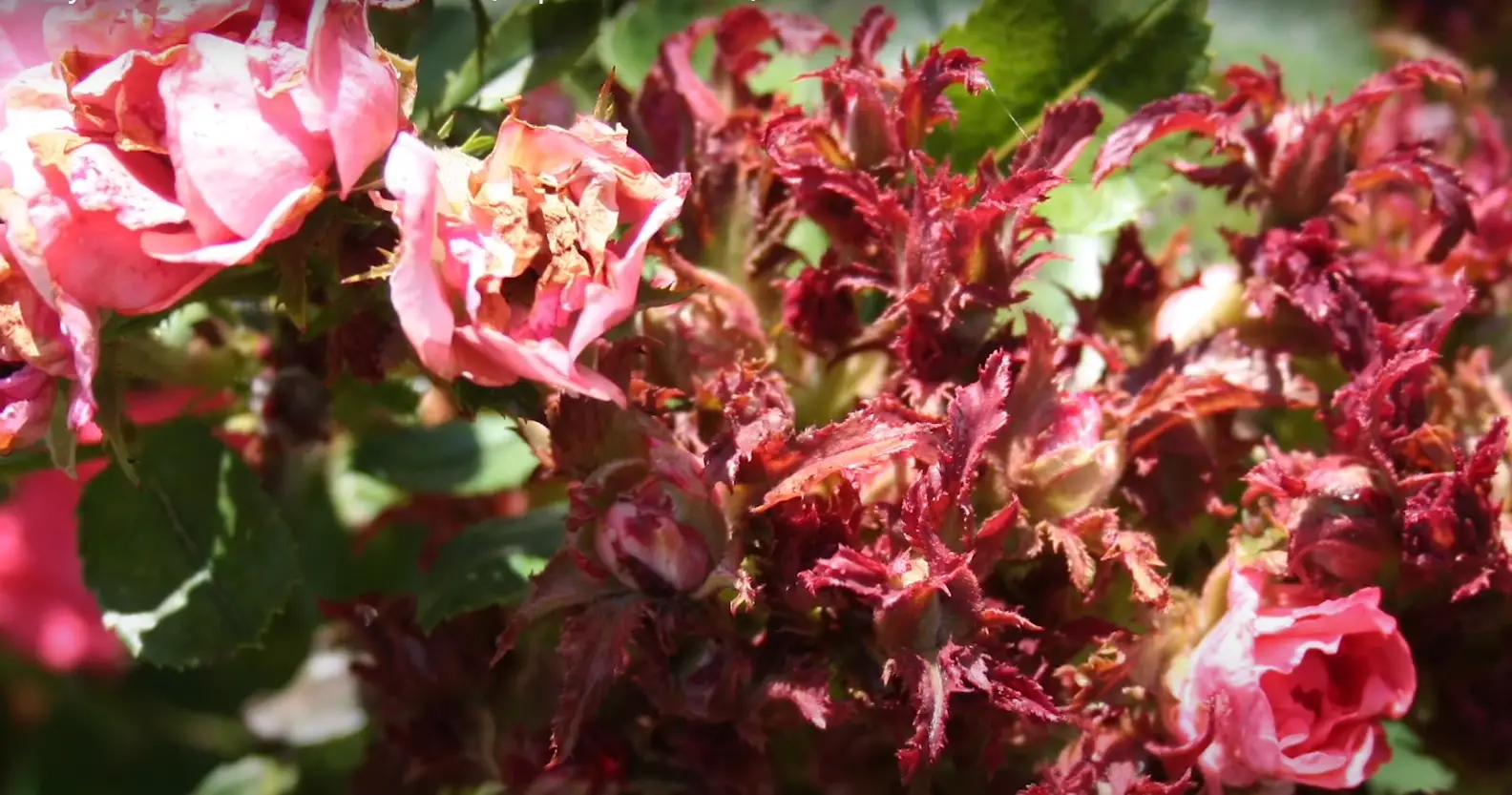




Leave a Reply
View Comments